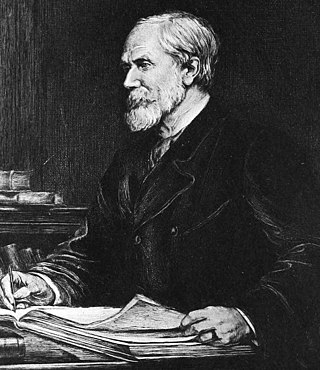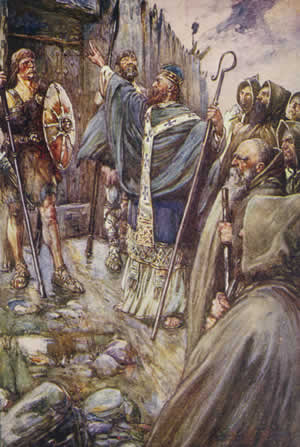Related Research Articles

Marco Polo was a Venetian merchant, explorer and writer who travelled through Asia along the Silk Road between 1271 and 1295. His travels are recorded in The Travels of Marco Polo, a book that described to Europeans the then-mysterious culture and inner workings of the Eastern world, including the wealth and great size of the Mongol Empire and China in the Yuan Dynasty, giving their first comprehensive look into China, Persia, India, Japan and other Asian cities and countries.

Prester John was a legendary Christian patriarch, presbyter, and king. Stories popular in Europe in the 12th to the 17th centuries told of a Church of the East patriarch and king who was said to rule over a Christian nation lost amid the pagans and Muslims in the Orient. The accounts were often embellished with various tropes of medieval popular fantasy, depicting Prester John as a descendant of the Three Magi, ruling a kingdom full of riches, marvels, and strange creatures.

Colonel Sir Henry Yule was a Scottish Orientalist and geographer. He published many travel books, including translations of the work of Marco Polo and Mirabilia by the 14th-century Dominican Friar Jordanus. He was also the compiler of a dictionary of Anglo-Indian terms, the Hobson-Jobson, with Arthur Coke Burnell.

The Royal Asiatic Society of Great Britain and Ireland, commonly known as the Royal Asiatic Society, was established, according to its royal charter of 11 August 1824, to further "the investigation of subjects connected with and for the encouragement of science, literature and the arts in relation to Asia." From its incorporation the society has been a forum, through lectures, its journal, and other publications, for scholarship relating to Asian culture and society of the highest level. It is the United Kingdom's senior learned society in the field of Asian studies. Fellows of the society are elected regularly and include highly accomplished and notable scholars of Asian studies; they use the post-nominal letters FRAS.
William of Rubruck or Guillaume de Rubrouck was a Flemish Franciscan missionary and explorer.

Odoric of Pordenone, was a Franciscan friar and missionary explorer from Friuli in northeast Italy. He journeyed through India, Sumatra, Java, and China, where he spent three years in the imperial capital of Khanbaliq. After more than ten years of travel, he returned home and dictated a narrative of his experiences and observations called the Relatio, highlighting various cultural, religious, and social peculiarities he encountered in Asia.

Jordan Catala of Sévérac was an Occitanian Dominican missionary and explorer in Asia known for his Mirabilia descripta describing the marvels of the East. He was the first bishop of the diocese of Quilon, the first Roman Catholic diocese in the Indian subcontinent.

Rajuvula was an Indo-Scythian Great Satrap (Mahākṣatrapa), one of the "Northern Satraps" who ruled in the area of Mathura in the northern Indian Subcontinent in the years around 10 CE. The Mathura lion capital was consecrated under the reign of Rajuvula. In central India, the Indo-Scythians had conquered the area of Mathura from Indian kings around 60 BCE. Some of their satraps were Hagamasha and Hagana, who were in turn followed by Rajuvula.

Sayyid Ajall Shams al-Din Omar al-Bukhari was Yunnan's first provincial governor, appointed by the Mongol-led Yuan dynasty of China.

The Diocese of Quilon is a Latin Church ecclesiastical jurisdiction or diocese of the Catholic Church based in the southern Indian city of Kollam. It is a suffragan in the ecclesiastical province of the metropolitan Archdiocese of Trivandrum. The Diocese of Quilon covers an area of 1,950 km2 that contains a population of some 4.8 million. At least 4.8% of the people in the area are Catholic.

Beshbalik is an ancient Turkic archaeological site, now located in Jimsar County, Changji Hui Autonomous Prefecture, Xinjiang, China. The ancient city was initially called Beiting or Ting Prefecture, and was the headquarters of the Beiting Protectorate during the 8th century. It was later known as Beshbalik and became one of the capitals of the Uyghur Khaganate and then the Kingdom of Qocho.

The Abbot of Iona was the head of Iona Abbey during the Middle Ages and the leader of the monastic community of Iona, as well as the overlord of scores of monasteries in both Scotland and Ireland, including Durrow, Kells and, until the Synod of Whitby, Lindisfarne. It was one of the most prestigious clerical positions in Dark Age Europe, and was visited by kings and bishops of the Picts, Franks and English. The Ionan abbots also had the status of Comarba of Colum Cille, i.e. the successors of that Saint, Columba.
John of Montecorvino or Giovanni da Montecorvino in Italian was an Italian Franciscan missionary, traveller and statesman, founder of the earliest Latin Catholic missions in India and China, and archbishop of Peking. He converted many people during his missionary work and established several churches in Yuan dynasty-held Beijing. John of Montecorvino wrote a letter intending to convert the Great Khan to Catholicism. He was a contemporary of Marco Polo.

Fellows of the Royal Asiatic Society of Great Britain and Ireland are individuals who have been elected by the Council of the Royal Asiatic Society to further "the investigation of subjects connected with and for the encouragement of science literature and the arts in relation to Asia".

Stephen Wootton Bushell CMG MD was an English physician and amateur Orientalist who made important contributions to the study of Chinese ceramics, Chinese coins and the decipherment of the Tangut script.
The Pakalomattam family is an ancient Marthoma Nasrani family in Kerala, India. According to the Royal Asiatic Society of Great Britain and Ireland, the family "solely supplied bishops and archdeacons to the Church [in India] till the beginning of the nineteenth century." The position of Archdeacon of All India, who oversaw the whole Christian church in India, was with very few exceptions filled by a member of the Pakalomattan family for generations.
Nasr al-Din was a provincial governor of Yunnan during the Yuan dynasty, and was the son of Sayyid Ajjal Shams al-Din Omar.
Charles Dodgson was an English Anglican cleric who served in the Church of Ireland as the Bishop of Ossory (1765–1775) then Bishop of Elphin (1775–1795).
Stephen G. Haw is a botanical taxonomist and historian, specializing in subjects relating to China. He is the author of several published books and a large number of periodical articles. His most important work relates to the taxonomy of Tree Peonies and to the history of the Mongol period in East Asia. He has made a major contribution to studies of Marco Polo's account of East Asia: according to Peter Jackson, an authority on the history of the Mongol conquests, his book about Marco Polo "must surely now have settled the controversy surrounding the historicity of Polo's visit to China."

Quilon or Coulão, officially Kollam is one of the ancient civilizations in India.It is one of the oldest port cities in the Malabar Coast and was the capital city of historic Venad Kingdom and Travancore Kingdom. Quilon was once an important trading port in India. It was also known as Desinganadu. It is now known as the "Cashew Capital of the World".
References
- ↑ Moffett, Samuel H. (1998). A History of Christianity in Asia. Orbis. ISBN 1-57075-162-5.
- ↑ Dickens, Mark (2000). "The Church of the East: The Rest of the Story". Fides et Historia: Journal of the Conference on Faith and History . 32 (2): 107–125.
- ↑ Beazley, Charles Raymond (1949). The Dawn of Modern Geography: From the middle of the thirteenth to the early years of the fifteenth century (c.A.D. 1260-1420). P. Smith. p. 221.
- ↑ Polo, Marco (1942). Travels of Marco Polo. Plain Label Books. p. 788. ISBN 1-60303-300-9.
- ↑ Yule, Henry (1866). Cathay and the way thither; a collection of medieval notices of China. Hakluyt Society. p. 192.
- ↑ "Journal of the Royal Asiatic Society of Great Britain and Ireland". Journal of the Royal Asiatic Society of Great Britain and Ireland. Royal Asiatic Society of Great Britain and Ireland. 6: 92. 1873.
- ↑ Beazley, Charles Raymond (1911). . In Chisholm, Hugh (ed.). Encyclopædia Britannica . Vol. 15 (11th ed.). Cambridge University Press. p. 512.
- ↑ Gerson da Cunha, J. (1993). Notes on the history and antiquities of Chaul and Bassein. Asian Educational Services. pp. 172–3. ISBN 81-206-0845-3.